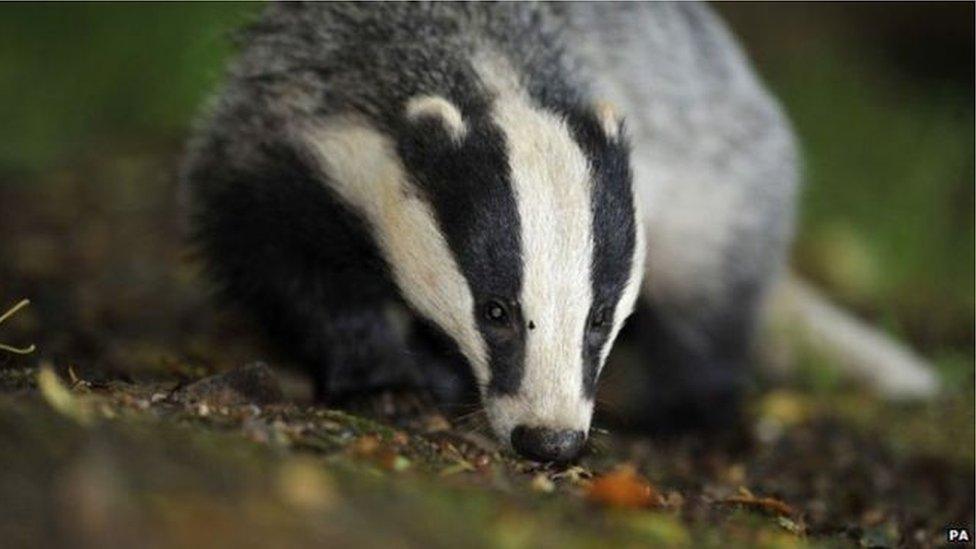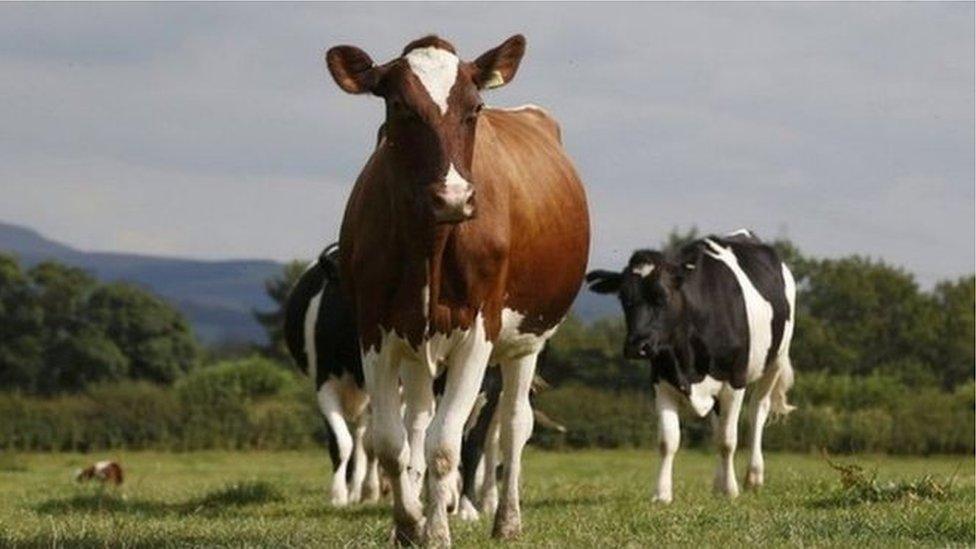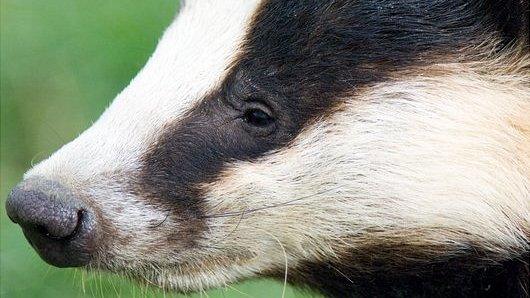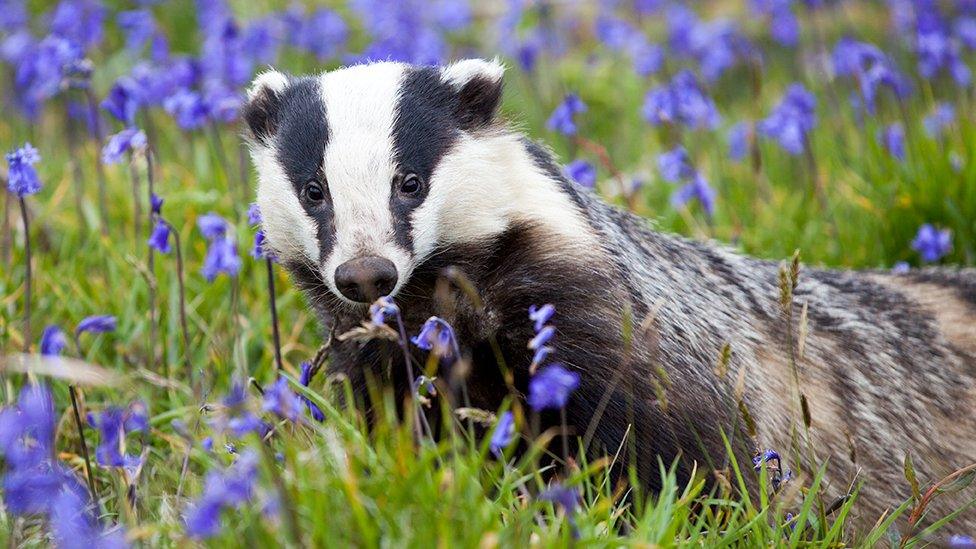Badger culls have varying impacts on cattle TB
- Published

The UK government's badger cull has had mixed effects on the incidence of tuberculosis (TB) in cattle, a new study reports.
A team found the incidence of cattle TB had fallen in two areas where badgers had been culled and slightly increased in a third area.
Farming groups claim the figures demonstrate badger culls are working.
But researchers are more cautious about the results, which have been published in the journal Scientific Reports, external
Gloucestershire saw a 66% fall in incidence of cattle TB and Somerset saw a 36% drop over the period between 2013 and 2017. Dorset, the third badger culling zone, saw a 10% increase, which the report's authors say is not statistically significant, in cattle TB from 2015 to 2017.
Co-author Christl Donnelly from Oxford University and Imperial College London, told BBC News the results showed "significant reductions" in two of the areas where there had been culls for four years and a slight increase in another where they had been going on for two.
Stuart Roberts, vice president of the National Farmers Union (NFU), said the paper "definitively shows the phenomenal impact culling badgers has on reducing TB levels in cattle".
He added: "There should now be no doubt in anyone's mind that this policy works."
But Prof Donnelly said the results did not prove that culling would be an effective policy everywhere.
"Those interested in culling will see the results as encouraging. But we do see different impacts in different areas and after two more years of culling in Dorset we may see impacts that are different again. So we will need to continue to monitor these areas," she said.
"We can't say definitively from these results how culling will impact incidence in an area we haven't studied yet, but it is noteworthy that all the areas studied for four years or more have seen reductions in incidence."
The science behind the badger cull was established in 1990s
Prof Rosie Woodroffe of the Zoological Society of London (ZSL), who was not involved with the study, suggested the varying results observed in Prof Donnelly's study could be due to natural annual variation in TB rates seen in cattle.
"Because the number of years and the number of areas studied in this paper are quite small, the results will be sensitive to that variation," she told BBC News.
"For example, in Gloucestershire, which appears to show the biggest effect of badger culling, there has been an upswing in TB in cattle this year which has not been included in this research. So it is possible that if they were to repeat the same analysis, the benefits for this year would not look the same as they do in the published study."
Iain McGill, a vet coordinating a group of fellow vets, researchers and campaign groups opposed to the culls, has similar concerns.
"The entire paper relies on other data which is two years out of date without even considering subsequent data available for 2018, which saw a 130% increase in confirmed bovine TB cases in Gloucestershire, as well as a doubling of the incidence rate over the 2018 cull year," he said.
"Using 2018 data, it is clear that there has been an overall worsening of the burden of disease in both Gloucestershire and Dorset since culling first began.
"Using 2017 figures to justify continuing this cull, when the government's own 2018 data shows just how disastrous it has really been, is like choosing to report only on the first half of a football match just because it doesn't suit you that the final score was a bitter defeat."
Rosie Woodroffe and Christl Donnelly were both involved in an extensive test of the effectiveness of badger culling that lasted nine years from 1998 to 2006. It was known as the Randomised Badger Control Trial (RBCT).
The RBCT showed that any benefit from killing infected badgers could be outweighed by the observation that animals from surrounding areas move into zones where badgers have been culled, because there is more food for them. They then spread infection further afield when they return to their setts outside the cull areas.

The spread of cattle TB is devastating the livelihoods of many farmers
This observation, for which there was more evidence this week, led the scientist who designed the RBCT, Lord Krebs of Oxford University, to warn that if culls were not properly carried out they risked increasing the spread of cattle TB. He described the policy as a "crazy scheme" when the current culls began seven years ago.
In response to the new results, Lord Krebs said because the culls in Gloucestershire, Somerset and Dorset were not set up as "proper experiments", it was difficult to interpret the results.
"Furthermore, the authors report that in the RBCT, under 6% of cattle infections came from badgers," he said.
"All the recent scientific evidence points to a central role of cattle-to-cattle transmission, and focusing on killing badgers is probably a distraction from the main story."
A Defra spokesperson said: "This independent and detailed analysis builds on previously published data showing strong reductions in the disease in cattle in the Gloucestershire and Somerset areas over four years when compared to un-culled areas."
"There is no single measure that will provide an easy answer to beating the disease. That is why we are pursuing a range of interventions to eradicate the disease by 2038, including tighter cattle movement controls, strictly licensed badger control, regular testing and vaccinations," he said.
The chief executive of the Badger Trust, Dominic Dyer, questioned whether the reductions in TB incidence in Gloucestershire and Somerset could be attributed solely to badger culling and not a wide range of cattle-based measures, which have also been implemented in these cull zones.
Follow Pallab on Twitter, external
- Published17 September 2012

- Published9 October 2019

- Published9 September 2019
